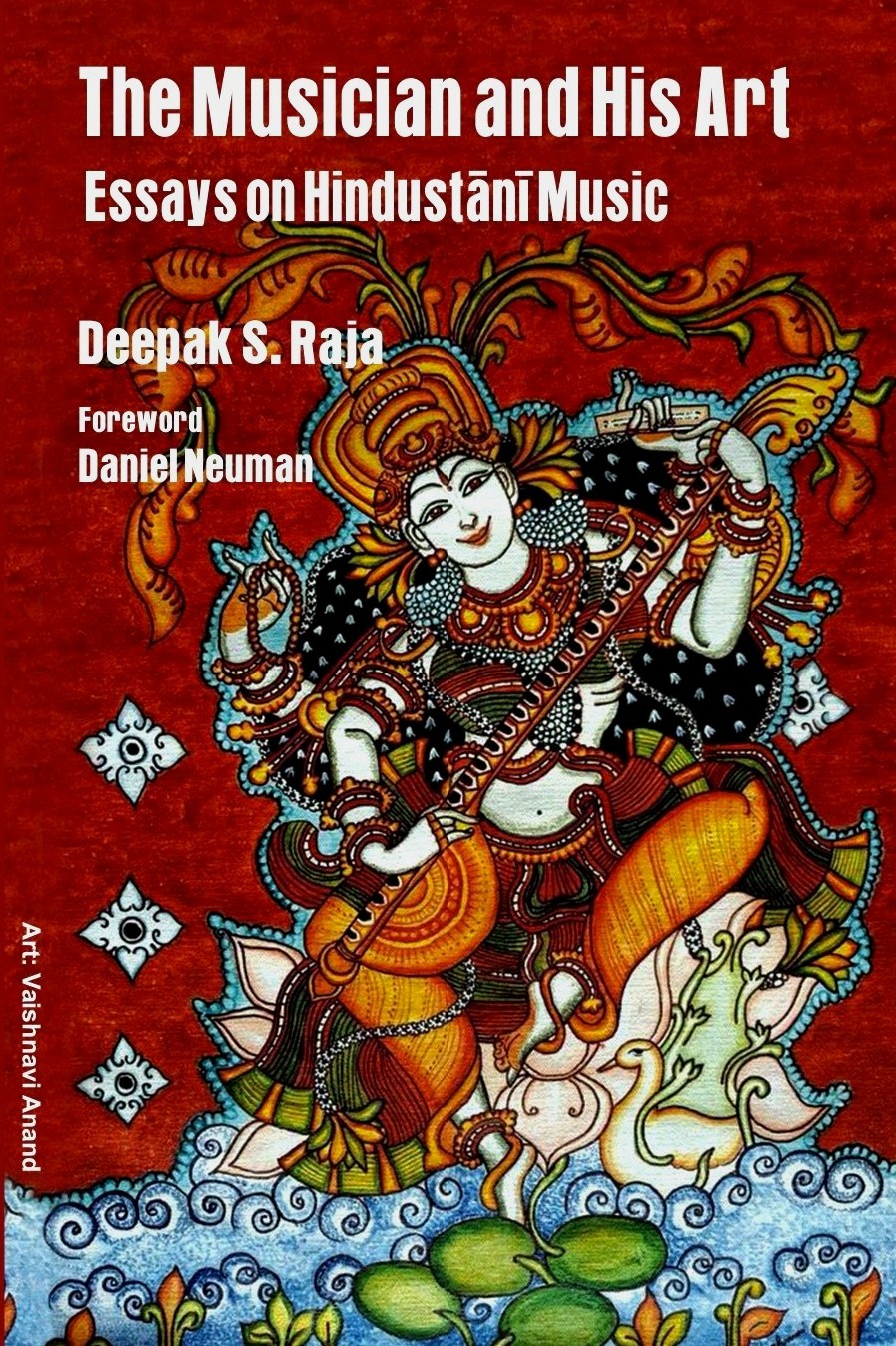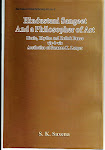 Tejendra Majumdar spoke to Deepak Raja on December 21, 2003
Tejendra Majumdar spoke to Deepak Raja on December 21, 2003I was 9 years old when I was taken to Bahadur Khan Saheb for training. My uncle had been his disciple; so he knew the family. Until then, I had been playing the mandolin. He kept me on tenterhooks for six months before he agreed to teach me. My parents were relieved when he said yes. But, for a nine-year old mandolin player, the transition to the Sarod was not easy. The instrument was heavy, my plectrum strokes were too light to produce the required impact, and my Ustad had a fowl temper.
My training started with raga Yaman. Actually, he taught me Yaman three times – from A to Z each time – during his life. The last was a few months before his demise in 1989. I used to go to him four to five times a week. Twice or thrice during the week after school, and full days over weekends. In those days (1969-70), his fees were Rs. 75 per month. My middle class family could not afford them. So, he agreed to teach me for Rs. 30 a month. After a few years, he stopped accepting even this amount.
He generally took eight to nine months to teach a raga. At other times, he would take one family of raga-s, and take me through all the variants of it within a day. The first time he did this, it was Malhar. He started with Miya-ki Malhar, then Gaud Malhar, then Nat Malhar, then Charju-ki Malhar, then Ramdasi Malhar, and went on until all Malhar variants had been exhausted. By the end of the day, my head was swirling, and I could not sleep that night. The next morning, he asked me how good the learning had been. I had to say it was fine out of fear of upsetting him. But, having said that, I dared not mix up the raga-s ever again. On other occasions, he took up Shuddha Kalyan, followed immediately by allied ragas – Bhoop and Deshkar. Similarly, he taught me Shyam Kalyan along with its near-identical twin, Shuddha Sarang. In 20 years of training with him, I had been taken through the paces with more than 50 ragas.
His method of teaching a raga was to take me through the alap, along with bandish-es of every variety, and their treatment. In each raga, he would teach me vilambit gats, along with the improvisatory movements, then Sitarkhani (medium tempo) gats with their improvisatory movements, then drut (fast tempo) gats with their improvisatory movements. Some ragas were taught with Dhrupad bandish-es, along with the improvisatory movements for Dhrupad. Each category of bandish had a different approach to improvisatory movements.
Over a period, I developed a very intimate relationship with him. He would take me with him whenever he traveled for concerts. In those trips, a got to know many of the greatest maestros of the times, and learnt a lot not only about music, but the etiquette and decorum of the music world. I had been with him for seven years when he decided to hold my “Ganda-bandhan” (ceremonial initiation). Ganda-bandhan signifies the Guru accepting total responsibility for the progress of the disciple. After that ceremony, Bahadur Khansaheb devoted himself even more wholeheartedly to my growth.
My Ustad's three-octave tan-s drove me up the wall
The training I got from Bahadur Khansaheb laid a strong foundation of raga knowledge and the presentation of bandish-es. He was a master of the left hand as well as right hand technique. His alap-s achieved a depth of raga exploration that I have not heard from anyone else. The three-octave tan-s he made me practice in Bihag drove me up the wall for several weeks. The spring in his right hand was incredible – he could make the direction reversal on any string with any combination of power between outward and inward strokes. His inventory of jhala techniques was more sophisticated than the most sophisticated jhala ever played on the Been. He taught me all of them, though I have mastered and normally perform only a small fraction of what I have been taught. While his right hand executed these incredible stroke combinations on the melodic and chikari strings, the left hand used to play the alap.
At that stage in my life, I do not believe I could have received better training on the Sarod than I got from Bahadur Khansaheb. It is unfortunate that he died so young (Age: 60). He was also an unlucky musician for not having got the recognition that he deserved as a Sarod soloist. I feel good, though embarrassed, that my success is reviving public interest in my Ustad’s music.
When he died, I had a real problem. By then, I was already a performing musician; but the learning had to continue. After this quality of training, where could I go? For a while, I studied with Ajoy Sinha Roy, a senior of the Maihar gharana, but more of a scholar than a performing musician. He guided me with great affection, but kept pleading with me to go to Ali Akbar Khansaheb. I was diffident considering that Ali Akbar Khan was so busy and lived abroad. I then went to Annapoorna Devi, the sister of Ali Akbar Khansaheb in the hope of learning from her. She too directed me to her brother, with a letter recommending that he accept me as a disciple.
Know a raga as intimately as your wife
In 1992, when I was on a concert tour of the US, I met Ali Akbar Khansaheb with a letter of introduction from Annapoorna Devi, and he started guiding me. Training with him is sporadic – either when I am in the US or when he is in India. His approach to training is similar to Bahadur Khansaheb’s. Entirely oral transmission. No writing down. He insists that I internalize the guidance like a computer program. At this stage, we are not looking at technique, but the approach to handling a raga, and understanding all its facets. Currently, I am learning Maluha Kedar. It is a small raga. But, with his guidance, I should be able to play it for an hour without repeating a single phrase. He believes that one should get to know a raga as intimately as one knows one’s wife. Just as I can recognize my wife by just a glimpse at her toe-nails, or her finger, a raga should become recognizable by the delivery of just a single swara. When you receive this kind of guidance from a Guru, there is little chance that you can turn out to be a clumsy musician.
It is really tragic that my generation of musicians is not taking raga knowledge seriously. If you don’t care for the infinite melodic potential of a raga, why do you perform classical music? You can perform something else and do equally well, or perhaps even better!
I cannot imagine settling abroad
Over the last three years, I have been doing an average of 40 to 50 concerts a year. Three years ago, I balance was in favour of the US and Europe. Gradually, over the last two years, it has moved towards half abroad and half in India. Although I have performed in most important cities of India, I have yet to perform in a few important Indian centers like Pune. This too is about to happen. My experience tells me that audiences in the US and Europe are, on an average, open minded and serious, while in India the picture is patchy. Where we get the most money in India, we often get indifferent audiences. In the west, the money and audience quality are both more consistent.
I now spend five to six months a year abroad. From every angle, the western market is important for a musician. But, I cannot imagine settling abroad. I feel sorry for those musicians who had the opportunity of settling abroad, did it, and lost touch with India. Yes, they might have survived. But, within a few years, they stopped growing as musicians and also lost their credibility. Unless we interact in a sustained and a serious manner with the Indian music world, we stagnate, and the western audiences will not give us respect unless we also command respect at home.
© Deepak S. Raja, 2003
The finest recordings of Tejendra Majumdar have been produced by India Archive Music , New York.











